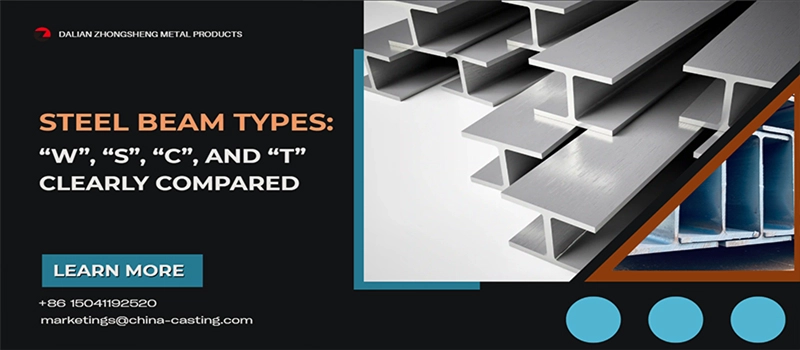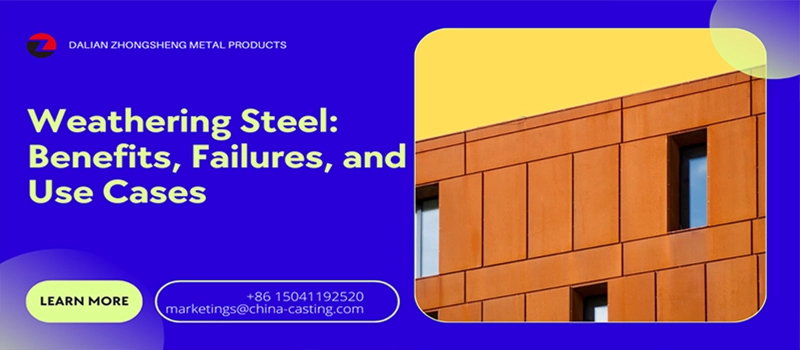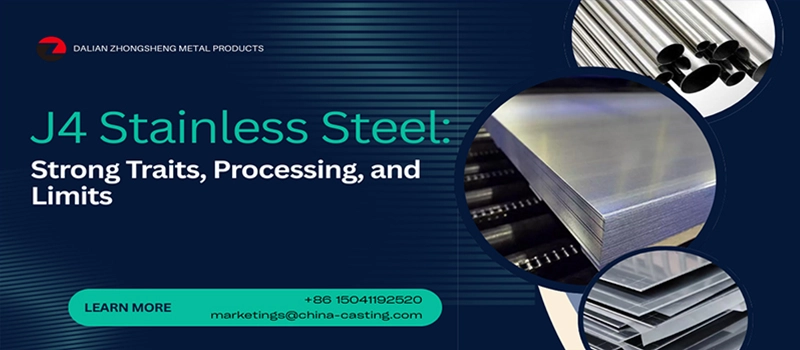Are you unsure whether to use carbon steel or stainless steel for your next project? Wondering which material offers better corrosion resistance, strength, or cost-efficiency? Is carbon steel vs stainless steel just a matter of price, or are there deeper performance differences that could impact your production schedule or long-term durability?
The truth is, both carbon steel and stainless steel have distinct advantages—and knowing when to use one over the other is critical for industrial success. While carbon steel is known for its strength, machinability, and affordability, stainless steel is unbeatable in environments where corrosion resistance and hygiene matter most.
If you’re in the process of sourcing materials for casting, machining, or metal fabrication, understanding the difference between carbon steel vs stainless steel will give you the clarity you need to make confident, cost-effective decisions. Let’s break it all down.
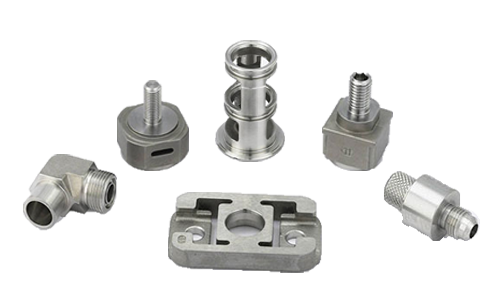
Get a quote now!
What Is Carbon Steel in the Carbon Steel vs Stainless Steel Debate?
Carbon steel is one of the most widely used materials in industrial manufacturing—and a cornerstone of the carbon steel vs stainless steel comparison. It’s called “carbon” steel because carbon is its main alloying element, usually ranging from 0.05% to 2.1% by weight. While small in proportion, that carbon content greatly influences the steel’s hardness, strength, and ductility.
There are three general categories of carbon steel based on carbon concentration:
- Low carbon steel (up to 0.3% carbon): This is soft, ductile, and easy to weld. It’s the most affordable type and ideal for parts that don’t require high strength, such as structural beams or automotive panels.
- Medium carbon steel (0.3% to 0.6% carbon): Offers a good balance between strength and flexibility. It’s commonly used for mechanical parts like gears, axles, and shafts—where both toughness and hardness matter.
- High carbon steel (0.6% to 2.1% carbon): Very strong, wear-resistant, and can be hardened further by heat treatment. However, it becomes more brittle and less weldable. This category is often used for cutting tools, knives, and high-strength components.
Compared with stainless steel, carbon steel has a simpler chemical composition, which makes it easier and cheaper to produce. It doesn’t contain expensive elements like chromium or nickel, which are essential to stainless steel’s corrosion resistance. This lower alloy content is what makes carbon steel more cost-effective for many applications, especially in price-sensitive markets.
In our metal casting and machining factory, we see carbon steel favored for high-volume parts that demand strong mechanical performance and low unit cost—such as agricultural machine arms, construction fasteners, or vehicle suspensions. Many clients in North America and Southeast Asia specifically request carbon steel when corrosion isn’t a concern, but strength and price are.
That said, carbon steel’s biggest weakness is its susceptibility to corrosion. Without coatings like paint, powder, or galvanization, it can quickly rust in humid or chemical-rich environments. This is why carbon steel is ideal for indoor use, dry environments, or situations where external protective treatments are easy to apply and maintain.
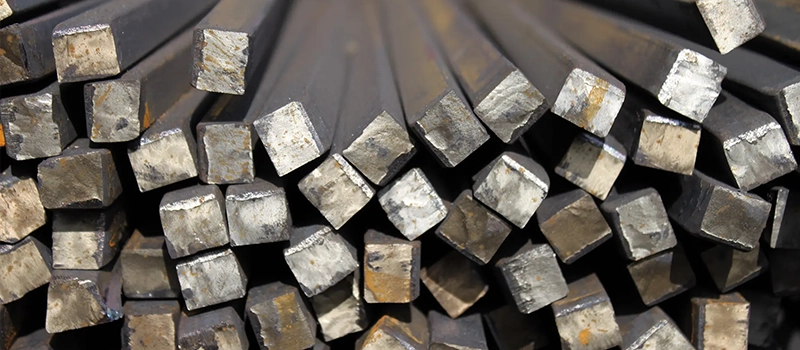
To summarize: carbon steel is a tough, versatile, and affordable material. But in the carbon steel vs stainless steel comparison, it only wins when corrosion resistance isn’t a top priority.
What Is Stainless Steel in the Carbon Steel vs Stainless Steel Comparison?
Stainless steel is a corrosion-resistant alloy of iron that contains a minimum of 10.5% chromium—the element responsible for its defining feature: resistance to rust and staining. In the ongoing carbon steel vs stainless steel debate, this one chemical addition sets stainless steel apart as the superior choice in harsh environments.
When chromium is exposed to oxygen, it forms a passive layer of chromium oxide on the metal’s surface. This ultra-thin layer protects the steel beneath from rusting. Even if the surface is scratched or damaged, the layer can regenerate itself in the presence of oxygen, giving stainless steel self-healing properties that carbon steel simply doesn’t have.
Stainless steel isn’t just one single material—it comes in several categories, each designed for specific applications:
- Austenitic stainless steel (e.g., 304, 316): These are the most commonly used grades. They are non-magnetic, highly corrosion-resistant, and suitable for food processing, chemical tanks, and marine applications.
- Ferritic stainless steel (e.g., 430): Magnetic and less expensive than austenitic types, ferritic steels offer moderate corrosion resistance and are often used in appliances and interior architectural features.
- Martensitic stainless steel (e.g., 410, 420): Known for high strength and hardness but lower corrosion resistance. These are often used in knives, turbine blades, and surgical instruments.
In many industrial sectors, stainless steel is the go-to material for long-lasting performance. It’s used in:
- Valves, pumps, and piping systems in chemical plants
- Food-grade surfaces in kitchens and processing factories
- Architectural panels and supports exposed to outdoor weather
- Medical equipment where hygiene is critical
Compared to carbon steel, stainless steel is more expensive due to its alloy content, but its low maintenance, long service life, and resistance to aggressive environments make it a better investment for certain applications.
However, stainless steel isn’t always easy to work with. It’s harder to machine, requires sharper tools, and generates more heat during cutting. In casting, it also demands more precise temperature control to avoid defects. These factors affect production time and cost—which is why we always advise our clients to choose stainless steel only when the environment demands it.
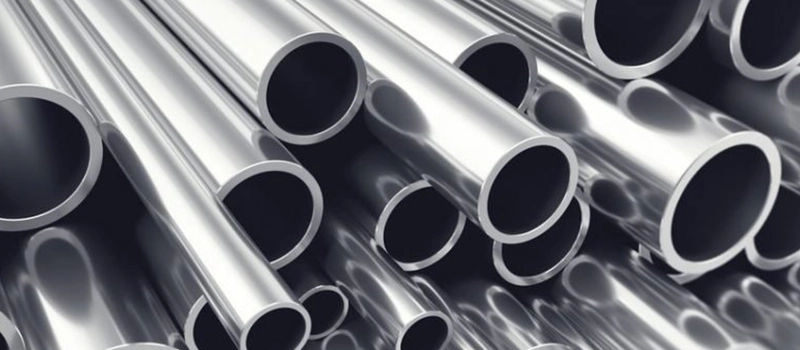
In essence, stainless steel is the preferred choice when corrosion resistance, hygiene, and long-term durability outweigh initial material cost. In the carbon steel vs stainless steel comparison, it becomes the clear winner in marine, food-grade, medical, and chemical applications.
Carbon Steel vs Stainless Steel: Key Composition & Structural Differences
When comparing carbon steel vs stainless steel, understanding the chemical composition is the starting point. These differences don’t just affect appearance or corrosion resistance—they influence performance, processing, and lifecycle costs across industries.
➤ Alloy Content
At its core, carbon steel is an iron-carbon alloy. Its performance is shaped mostly by how much carbon it contains:
- Low-carbon steel: <0.3% carbon
- Medium-carbon steel: 0.3%–0.6%
- High-carbon steel: >0.6%
Aside from carbon, carbon steels may contain trace amounts of manganese, phosphorus, and sulfur, but nothing more. This simplicity keeps costs low and mechanical properties high—but offers no built-in corrosion protection.
Stainless steel, on the other hand, includes 10.5% or more chromium—and often other alloying elements like:
- Nickel: Improves formability and corrosion resistance
- Molybdenum: Increases resistance to chemical attack
- Titanium or niobium: Stabilizes structure in high-heat applications
This richer composition makes stainless steel resistant to oxidation, rust, and chemical wear. But it also raises production complexity and cost.
➤ Magnetic Properties
Many clients ask: “Is stainless steel magnetic?” The answer is: it depends on the grade.
- Carbon steel is always magnetic because it’s ferritic in structure.
- Ferritic and martensitic stainless steels (e.g., 410, 430) are magnetic.
- Austenitic stainless steels (e.g., 304, 316) are non-magnetic, unless heavily cold-worked.
This matters in applications like electronics, food processing, or magnetic sensor environments, where magnetic or non-magnetic materials may be required.
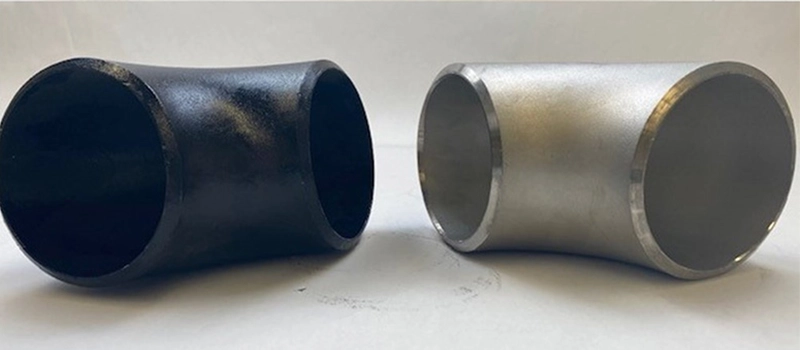
➤ Appearance & Surface Finish
Visually, carbon steel is usually dark gray or matte black unless coated or polished. It tends to oxidize quickly if exposed to air and moisture. This means carbon steel parts typically require surface treatments such as:
- Painting
- Powder coating
- Galvanizing
Stainless steel, in contrast, is shiny, smooth, and resistant to surface rust, even without coatings. It can be brushed, polished, or mirror-finished, making it ideal for applications where aesthetic appeal matters—such as kitchen appliances or architectural panels.
➤ Weight and Density
While the difference is small, stainless steel is slightly denser than carbon steel due to its higher alloy content.
| Material | Density |
|---|---|
| Carbon steel | ~7.85 g/cm³ |
| Stainless steel (304) | ~8.00 g/cm³ |
For large-scale industrial projects where shipping costs are a concern, this small difference can impact the total freight load—especially for international buyers like those in North America or Europe sourcing from China.
➤ Galvanic Corrosion Risk
Mixing carbon steel and stainless steel in the same assembly can lead to galvanic corrosion, especially in the presence of moisture or salt.
That’s because stainless steel is more noble (higher in the galvanic series) than carbon steel. When electrically connected, the carbon steel acts as the anode, corroding faster than normal. We always advise our customers to avoid direct metal-to-metal contact between the two, or to isolate them with insulators or coatings.
Final Thoughts on Composition
In the carbon steel vs stainless steel debate, the difference in composition is what ultimately drives:
- Corrosion performance
- Strength-to-weight ratio
- Processing needs
- Lifecycle cost
When selecting materials for casting or machining, these structural characteristics must be matched to your end-use environment, budget, and performance goals.
Carbon Steel vs Stainless Steel: Mechanical Properties Compared
When it comes to strength, durability, and performance under pressure, the carbon steel vs stainless steel comparison becomes even more critical. These mechanical properties determine how well a material holds up under stress, how it behaves during fabrication, and how long it lasts in real-world industrial environments.
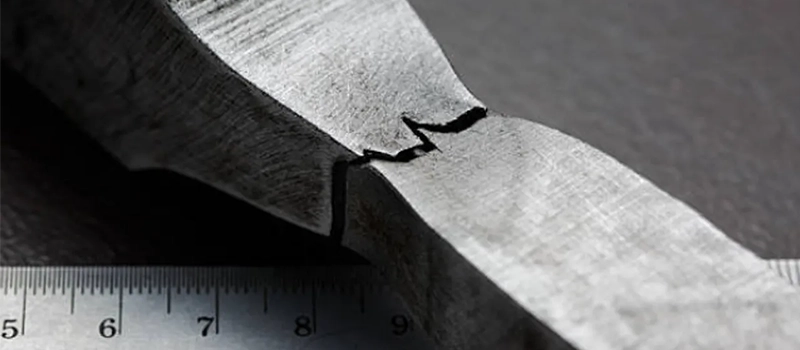
➤ Tensile Strength & Yield Strength
Carbon steel is known for its high tensile strength, especially in its medium- and high-carbon forms. That’s why it’s a popular choice in construction, automotive frames, agricultural arms, and pressure-bearing parts. For instance:
- AISI 1045 carbon steel:
- Tensile strength: ~570 MPa
- Yield strength: ~300 MPa
Stainless steel, particularly austenitic types like 304 and 316, has lower tensile strength but better elongation and ductility. That makes it less likely to crack under dynamic loads, even though it may not be as rigid.
- AISI 304 stainless steel:
- Tensile strength: ~515 MPa
- Yield strength: ~215 MPa
If you’re designing parts where high stress is involved—like gear shafts or load-bearing brackets—carbon steel may be the better performer. However, if flexibility and shock absorption are important, stainless steel could be the smarter choice.
➤ Hardness & Wear Resistance
In high-friction or abrasive environments, hardness matters. Carbon steel, especially when heat-treated, can reach Rockwell hardness values over 60 HRC, making it ideal for:
- Cutting tools
- Shearing blades
- Hardened components
Stainless steel (particularly martensitic grades like 420 or 440C) also achieves high hardness, but austenitic stainless (like 304) is relatively soft by comparison.
If your project involves frequent impact, rotation, or surface friction, the carbon steel vs stainless steel debate leans heavily in favor of carbon steel.
Need Help? We’re Here for You!
➤ Ductility & Toughness
Ductility measures how far a metal can stretch without breaking. This is where stainless steel often wins—especially austenitic grades that can elongate up to 40–50% before failure. This is critical in:
- Seismic zones (flexible structural components)
- Food processing where impact loading occurs
- Medical tools requiring repeated deformation
Carbon steel, while strong, is typically less ductile, particularly at higher carbon content levels. Once hardened, it becomes brittle, which is risky if the component must absorb energy or bend during operation.
➤ Thermal Conductivity & Expansion
In applications exposed to heat—such as engine parts, exhaust systems, or chemical reactors—thermal behavior is vital.
- Carbon steel has better thermal conductivity:
- Transfers heat efficiently
- Better for cooking pans and heat exchangers
- Stainless steel has lower thermal conductivity but higher thermal expansion, meaning it retains heat longer but expands more—important to consider in tight tolerances.
So in the carbon steel vs stainless steel analysis for heat applications:
- Choose carbon steel for fast heat transfer
- Choose stainless steel where heat resistance and corrosion resistance must coexist
Final Word on Mechanical Properties
In terms of raw mechanical strength, carbon steel usually takes the lead. But stainless steel excels in flexibility, corrosion resistance under stress, and performance in temperature-fluctuating environments.
This is why we work closely with our customers to match mechanical properties to project needs—not just on paper, but in real-world operating conditions.
Corrosion Resistance & Long-Term Durability: Carbon Steel vs Stainless Steel
In the carbon steel vs stainless steel discussion, corrosion resistance is one of the most important decision factors—especially for industrial buyers operating in humid climates, coastal areas, or chemical processing environments. Choosing the wrong material could result in premature rust, structural failure, or high maintenance costs.

➤ Why Carbon Steel Is More Prone to Corrosion
Carbon steel is fundamentally iron with varying amounts of carbon, and iron reacts easily with moisture and oxygen—forming iron oxide (rust). In the presence of water, salt, or industrial chemicals, this reaction accelerates.
Without protective coatings such as:
- Galvanization
- Powder coating
- Epoxy paint
- Oil-based sealing
carbon steel quickly deteriorates. This makes it less ideal for exterior installations, marine environments, or chemical applications where it may be exposed to corrosive agents.
In the carbon steel vs stainless steel comparison, this vulnerability is one of carbon steel’s biggest weaknesses.
➤ Stainless Steel’s Natural Defense Against Rust
The defining advantage of stainless steel in the carbon steel vs stainless steel comparison is its chromium content, which allows it to form a passive oxide layer on its surface. This layer is thin, transparent, and most importantly—self-repairing when scratched, as long as oxygen is present.
This is why stainless steel is commonly used in:
- Food processing plants
- Pharmaceutical equipment
- Marine and coastal construction
- Medical-grade tools and instruments
It’s also the preferred material for environments where hygiene, moisture, and chemical resistance are non-negotiable.
Need Help? We’re Here for You!
The most commonly used corrosion-resistant stainless grades include:
- 304 Stainless Steel – general-purpose, excellent resistance to most environments
- 316 Stainless Steel – superior resistance to salt and chlorides, ideal for marine use
- 430 Stainless Steel – affordable but less resistant to corrosion
➤ External Coatings vs Built-in Protection
The carbon steel vs stainless steel contrast becomes even sharper when we talk about protective mechanisms:
- Carbon steel: Relies on external surface treatments like paint or zinc coating
- Stainless steel: Possesses built-in corrosion resistance
This difference affects key cost and maintenance factors:
- Longevity: Stainless steel lasts longer without treatment
- Upkeep: Carbon steel needs periodic inspection and recoating
- Cost-effectiveness: Stainless steel may be more economical in the long run despite higher initial cost
In corrosion-prone industries, stainless steel pays for itself by reducing labor and downtime over time.
➤ Preventing Galvanic Corrosion in Mixed-Metal Assemblies
When carbon steel and stainless steel are used together in the same system, galvanic corrosion becomes a serious concern—especially if the materials are in contact and exposed to moisture.
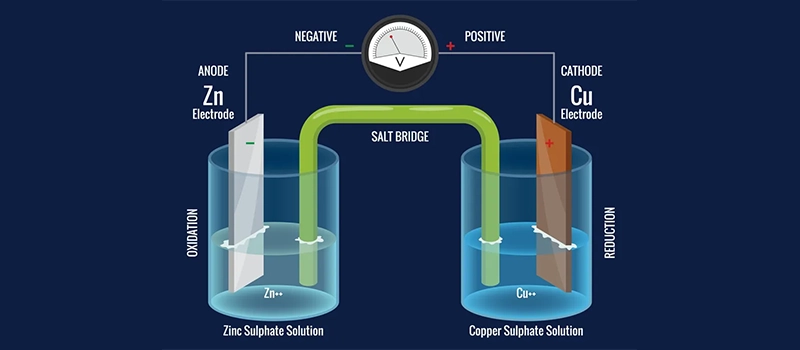
Stainless steel is more noble, and carbon steel becomes the anode, corroding at an accelerated rate in a galvanic couple. This issue is common in:
- Bolted joints
- Flanges and piping connections
- Structural framing with exposed fasteners
To avoid this:
- Use insulating washers or sleeves between metals
- Apply anti-corrosion coatings to carbon steel components
- Electrically isolate dissimilar materials during assembly
Awareness and prevention of galvanic corrosion is a small design consideration that saves big in future maintenance.
Final Thoughts on Durability
In summary, when choosing between carbon steel vs stainless steel, corrosion exposure should be one of the first questions you ask.
- Choose carbon steel if the environment is dry, cost-sensitive, and the part can be coated and maintained
- Choose stainless steel if long-term corrosion resistance is required with minimal upkeep
Carbon Steel vs Stainless Steel in Manufacturing: Casting, Machining & Welding
When evaluating carbon steel vs stainless steel for your next project, it’s essential to consider how each material behaves during manufacturing. Whether you’re casting complex parts, machining high-precision components, or welding structures together, the workability of the metal can significantly influence production timelines, costs, and quality outcomes.
Need Help? We’re Here for You!
➤ Casting Performance
Carbon steel is generally easier and more economical to cast. It has:
- A lower melting point
- More predictable flow characteristics
- Reduced sensitivity to shrinkage or hot cracking
- Better filling of complex molds in sand or investment casting
This makes carbon steel ideal for high-volume production, thicker parts, and components with intricate geometry that still need mechanical strength. Many industrial sectors favor carbon steel for cast housings, brackets, and structural joints.
Stainless steel, while also castable, presents more challenges:
- Higher melting point (over 1400°C)
- Increased risk of porosity, hot tearing, and microcracks
- Requires tighter process control and more expensive mold materials
- Needs longer cooling times and post-processing
Despite this, stainless steel is still the best choice for cast components exposed to corrosive environments such as valves, marine hardware, or chemical equipment. In the carbon steel vs stainless steel casting comparison, the decision hinges on whether corrosion resistance outweighs process complexity.
➤ Machinability Considerations
Carbon steel is known for its excellent machinability—especially low and medium carbon grades. It offers:
- Low cutting resistance
- Minimal tool wear
- Smooth chip formation
- High dimensional stability
This makes carbon steel suitable for turning, milling, drilling, and tapping operations, and it’s ideal when parts need to be fabricated at scale with high accuracy and low tool cost.
In contrast, stainless steel—especially austenitic grades like 304 and 316—is much more difficult to machine:
- Higher toughness leads to work hardening during cutting
- Generates more heat, requiring coolant systems
- Causes rapid tool wear, increasing production cost
- Requires carbide tooling and slower feed rates
In the carbon steel vs stainless steel machinability matchup, carbon steel clearly wins—unless corrosion protection or hygiene are mission-critical.
➤ Welding Behavior
Welding is another area where carbon steel has the advantage. It:
- Welds easily with standard MIG, TIG, or arc processes
- Requires fewer filler materials
- Has a lower risk of warping
- Is compatible with common welding gases
Carbon steel is widely used in structural fabrication, pipeline welding, and vehicle frames due to this flexibility.
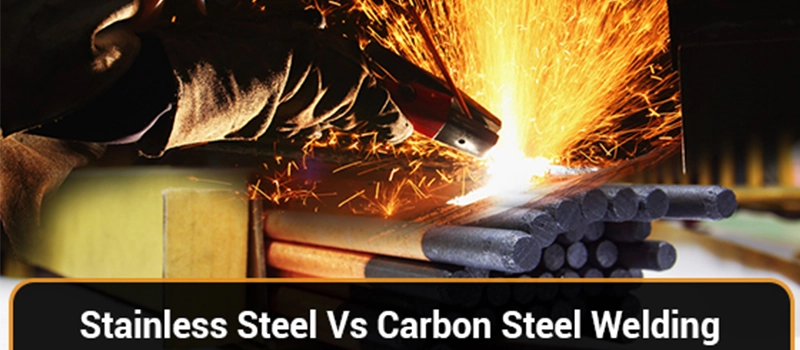
Stainless steel, while weldable, demands more expertise:
- Requires controlled heat input to prevent carbide precipitation (especially in 304)
- Must avoid distortion and thermal cracking
- Demands specific filler metals for each grade
- Needs more post-weld cleaning to maintain corrosion resistance
When comparing carbon steel vs stainless steel for welding, the right choice depends on skill level, equipment, and end-use conditions.
➤ Surface Finishing & Treatments
Post-processing also differs:
- Carbon steel often requires painting, powder coating, or galvanizing to protect against corrosion.
- Stainless steel can be left bare or polished to a decorative or hygienic finish.
Stainless steel is typically favored in environments where aesthetics and easy cleaning matter, such as commercial kitchens or medical facilities. Carbon steel, on the other hand, is better suited for utility parts where appearance is less critical.
Final Takeaway on Manufacturing
In manufacturing workflows—whether it’s casting, machining, or welding—carbon steel tends to offer lower cost, faster production, and easier processing. However, stainless steel is often worth the added effort in applications that demand high corrosion resistance, surface cleanliness, or chemical stability.
In the carbon steel vs stainless steel comparison from a production standpoint, your choice should be guided by:
- The complexity of your part
- Required surface finish
- Environmental exposure
- Volume and tooling cost
- Timeline and labor skill level
Applications by Industry: Where Carbon Steel vs Stainless Steel Fits Best
The true value of the carbon steel vs stainless steel comparison comes into focus when we examine how each material performs in real-world industrial applications. While both materials are used across multiple sectors, their strengths—and limitations—make them more suitable for different environments, loads, and functional demands.
➤ Construction & Structural Engineering
In structural applications, carbon steel is widely used for its high strength, low cost, and ease of fabrication. It’s commonly found in:
- Beams and columns
- Rebar reinforcement
- Support frames
- Bridges and heavy-duty platforms
However, when exposed to outdoor elements, carbon steel must be protected with galvanizing or painting to prevent corrosion.
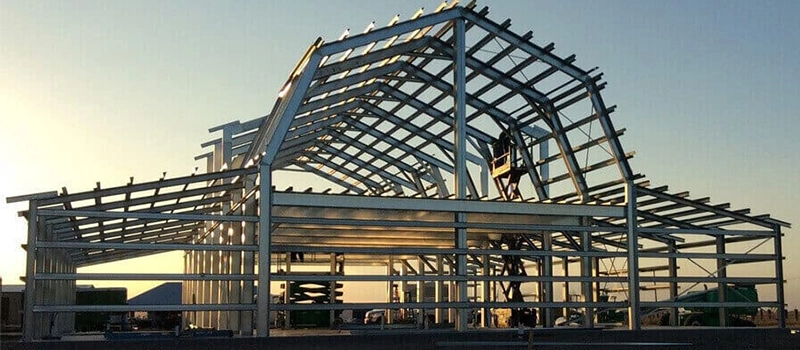
Stainless steel, while more expensive, is often used for architectural features that require both strength and aesthetic appeal:
- Exterior panels and cladding
- Railings and balustrades
- Load-bearing elements in corrosive environments (coastal areas or chemical plants)
In the carbon steel vs stainless steel discussion for construction, the choice depends on whether the component is load-bearing or exposed—and whether appearance or corrosion resistance is a long-term concern.
➤ Automotive & Transportation
In automotive engineering, carbon steel is the default choice for:
- Chassis components
- Brake calipers
- Suspension parts
- Axles and drive shafts
Its strength-to-cost ratio makes it ideal for mass production in a cost-sensitive industry. High-carbon steels are also used in cutting tools and wear-resistant engine parts.
Meanwhile, stainless steel is selected for:
- Exhaust systems (resistance to high heat and corrosion)
- Fuel tanks and fuel rails
- Trim and decorative elements
- Battery casings in EV applications (corrosion protection + electrical insulation)
Need Help? We’re Here for You!
In terms of carbon steel vs stainless steel for vehicles, the material is often chosen based on exposure to heat, salt, and weather conditions, as well as whether the part is visible or functional.
➤ Petrochemical & Chemical Processing
This is one of the clearest distinctions in the carbon steel vs stainless steel conversation.
Carbon steel can be used in:
- Pipe fittings for non-corrosive substances
- Structural supports in indoor plant environments
- Temporary piping systems
But when chemicals, acids, or salt-rich fluids are present, stainless steel becomes mandatory. Applications include:
- Storage tanks
- Reactors and pressure vessels
- Pipe systems carrying corrosive media
- Pump and valve components
Grades like 316 stainless steel are designed specifically for environments with chlorides, sulfides, or high humidity—conditions where carbon steel fails quickly.
➤ Food & Beverage / Medical / Hygiene-Critical Industries
Stainless steel dominates these sectors due to its:
- Non-reactive surface
- Resistance to bacteria and contamination
- Easy-to-clean finish
- FDA and ISO compliance potential
Common applications:
- Food processing equipment
- Commercial kitchens and sinks
- Surgical tools
- Pharmaceutical blending vessels
Carbon steel is rarely used in these industries, as it can rust, stain, and react with acidic food or cleaning agents. In the carbon steel vs stainless steel decision, stainless steel is non-negotiable here.
➤ Agriculture & Heavy Equipment
In agriculture, both materials are used depending on function:
- Carbon steel is ideal for:
- Tractor frames
- Harrows and plows
- Earth-moving buckets
- Bolts and hinges for sheds and greenhouses
- Stainless steel is chosen for:
- Dairy equipment
- Fertilizer and feed tanks
- Irrigation systems
- Animal processing machinery
Again, exposure to chemicals, manure, or saline water makes stainless steel the smarter long-term investment.
➤ Consumer Products: Knives, Cookware, and Appliances

- Carbon steel vs stainless steel knife
- Carbon steel vs stainless steel pan
- Carbon steel wok vs stainless steel wok
Here’s the breakdown:
- Carbon steel knives are sharper, easier to hone, and preferred by chefs for precise cutting—but they require oiling and care to prevent rust.
- Stainless steel knives are rust-resistant, durable, and low-maintenance—ideal for home use.
In cookware:
- Carbon steel pans heat faster and give excellent searing but can rust.
- Stainless steel cookware is more corrosion-resistant and dishwasher-safe but slower to heat.
The carbon steel vs stainless steel decision here depends on the user’s skill level, maintenance preference, and performance expectations.
Final Word on Applications
Every industry has unique priorities: strength, weight, corrosion, hygiene, or cost. That’s why the carbon steel vs stainless steel debate isn’t about which is better overall—but which is better for your application.
Carbon Steel vs Stainless Steel: Cost, Weight & Supply Chain Impact
When comparing carbon steel vs stainless steel, the discussion often comes down to one bottom-line question: what will it cost, and how will it impact production and delivery? Understanding material price, weight differences, and logistics helps buyers avoid miscalculations that can derail project budgets or schedules.
➤ Material Cost Comparison
The most obvious and consistent difference between carbon steel vs stainless steel is price.
- Carbon steel is significantly cheaper, both in raw form and after processing. It contains fewer alloying elements and is faster to produce.
- Stainless steel includes expensive additions like chromium, nickel, and molybdenum, which increase the base material cost—sometimes up to 3–4x more per kilogram than carbon steel.
Here’s a rough market comparison (subject to fluctuation):
| Material | Approx. Price (USD/kg) |
|---|---|
| Low Carbon Steel | $0.60 – $0.90 |
| 304 Stainless Steel | $2.50 – $4.00 |
| 316 Stainless Steel | $3.50 – $5.50 |
In bulk procurement, this price gap becomes substantial. For clients balancing performance with budget constraints, this is where carbon steel vs stainless steel cost becomes a decisive factor.

➤ Total Cost of Ownership
While carbon steel is cheaper upfront, it’s important to consider lifecycle costs:
- Carbon steel requires protective coatings, routine inspections, and periodic repainting or replacement in harsh environments.
- Stainless steel, though costlier at the start, provides long-term savings in corrosion-heavy applications by reducing maintenance and extending the service life.
So in low-risk or indoor applications, carbon steel saves money. But for projects exposed to the elements or chemicals, stainless steel might deliver better cost-efficiency over time.
➤ Weight Differences & Shipping Costs
Weight is another hidden cost factor in the carbon steel vs stainless steel comparison.
Stainless steel is slightly denser, which can affect:
- Shipping weight
- Material handling
- Structural load limits
- Installation logistics
| Material | Density (g/cm³) |
|---|---|
| Carbon Steel | ~7.85 |
| Stainless Steel (304) | ~8.00 |
While the per-unit difference may seem small, it adds up in high-volume shipments or structural builds. International buyers especially must consider freight charges based on both weight and volume.
In sea freight logistics, even a 5% weight difference can alter container selection, packaging materials, and shipping costs.
➤ Fabrication Time & Labor Costs
Because carbon steel is easier to machine, weld, and cast, it typically:
- Requires fewer tool changes
- Reduces production time
- Cuts down on labor hours
In contrast, stainless steel:
- Demands more careful handling
- Increases tool wear
- Requires skilled labor for welding and post-processing
For time-sensitive orders, carbon steel often offers faster turnaround and fewer delays. This is critical for buyers trying to align deliveries with their own factory schedules.

Get a quote now!
➤ Availability & Global Sourcing
Carbon steel has broader global availability due to its mass-market demand. It’s widely stocked by:
- Mills
- Distributors
- Foundries
- OEM factories
Stainless steel, especially higher-grade types (316L, 2205 duplex, etc.), can suffer from longer lead times and limited availability, depending on the region and current market conditions.
In the carbon steel vs stainless steel procurement process, it’s essential to consider:
- Lead time
- Supplier network
- Custom clearance (for alloy-grade imports)
- Certifications required for end markets (CE, ISO, REACH, etc.)
Final Word on Cost and Supply Impact
In terms of material cost, processing time, and freight logistics, carbon steel generally offers the most economical path—but only if corrosion protection isn’t a long-term concern.
Stainless steel, while pricier and more complex to manufacture, delivers value in environments where performance, hygiene, or durability are mission-critical.
Choosing between carbon steel vs stainless steel isn’t just about the price per kilogram. It’s about total project value, logistics efficiency, and material behavior throughout the supply chain.
Maintenance, Health & Environmental Factors: Carbon Steel vs Stainless Steel
Beyond strength and cost, the carbon steel vs stainless steel comparison also extends into areas like hygiene, maintenance, and sustainability—all critical considerations depending on the industry and application. A material’s long-term cleanliness, safety, and environmental impact can influence everything from equipment lifespan to user health and regulatory compliance.
➤ Maintenance Requirements
When it comes to maintenance, carbon steel typically requires more effort to preserve functionality and appearance.
Because carbon steel lacks natural corrosion resistance, it must be:
- Coated (painted, powder-coated, or galvanized)
- Regularly inspected for rust, chips, or coating failures
- Repaired or re-coated as needed—especially in outdoor or humid environments
Failure to maintain carbon steel can result in structural degradation, equipment malfunction, or even contamination if used in sensitive settings.
Stainless steel, on the other hand, requires far less maintenance due to its self-protective chromium oxide layer. Even in aggressive environments, it remains intact and functional with minimal upkeep.
- No painting or coating required
- Easy to clean with water or alcohol-based solutions
- Does not stain or react with most cleaning chemicals
In the carbon steel vs stainless steel maintenance comparison, stainless steel is the clear winner for durability and labor savings—especially in industries like food production, medicine, or outdoor infrastructure.
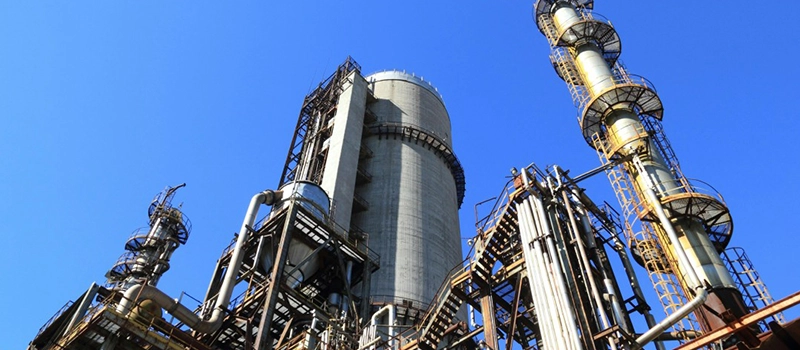
➤ Hygiene & Food Safety
One of the biggest distinctions in the carbon steel vs stainless steel debate comes from hygiene-sensitive applications.
Stainless steel is the gold standard in environments requiring:
- Bacterial resistance
- Non-reactive surfaces
- Frequent sterilization
- FDA or medical-grade compliance
That’s why stainless steel is used in:
- Commercial kitchens
- Food processing machinery
- Hospitals and operating rooms
- Pharmaceutical manufacturing
Its smooth, non-porous surface prevents bacterial buildup, is resistant to acidic foods, and holds up under regular sanitizing with chemicals or heat.
Carbon steel, while useful in many structural or mechanical applications, lacks hygiene benefits. It:
- Can rust or pit when exposed to water or food
- Reacts with acidic or salty ingredients
- Requires constant oiling or protection in knives and cookware
For example, a carbon steel knife may offer excellent sharpness, but it must be cleaned, dried, and oiled after every use. In contrast, a stainless steel knife can be rinsed, wiped, and stored with no fear of rust or contamination.
➤ Health & Safety Considerations
From a health perspective, carbon steel is not inherently dangerous—but poor maintenance can create risk:
- Rust flakes can contaminate food or fluid systems
- Paint or coating failure may lead to chemical leaching
- Damaged carbon steel surfaces harbor bacteria or mold
Stainless steel avoids these issues with its natural resistance to both corrosion and chemical interaction. That’s why it’s trusted in:
- Water purification systems
- Surgical equipment
- Laboratory storage tanks
In the carbon steel vs stainless steel health comparison, stainless steel is a safer, more stable option for environments involving food, liquids, or human contact.

Get a quote now!
➤ Environmental Impact & Sustainability
Sustainability is a growing concern in global manufacturing, and both materials play a role in the carbon footprint of a project.
Carbon steel:
- Has a lower energy input during production
- Is highly recyclable and widely accepted by scrap facilities
- Often relies on coatings (like zinc or epoxy), which may be less eco-friendly over time
Stainless steel:
- Requires more energy to produce, due to alloying and processing
- Has a longer service life, reducing waste and replacement cycles
- Is 100% recyclable, with high scrap value and minimal degradation after reuse
In high-volume, short-lifecycle applications, carbon steel may leave a lighter immediate footprint. But in long-lifecycle, low-maintenance projects, stainless steel delivers better sustainability over time.
Final Take on Hygiene, Maintenance & Environment
In summary:
- Choose carbon steel if you’re in a low-risk, budget-sensitive environment and can manage coatings and maintenance.
- Choose stainless steel if hygiene, rust prevention, or environmental durability are critical to your operation.
The carbon steel vs stainless steel decision must weigh initial cost vs long-term performance—not just in the workshop, but in the real world, where rust, contamination, and regulations can make or break a project.
Choosing the Right Steel: Carbon Steel vs Stainless Steel & How We Guarantee It
Making the right choice between carbon steel vs stainless steel is not just about comparing materials—it’s about aligning technical needs, budget, and long-term reliability. Selecting the wrong material can cause early failure, costly maintenance, or project delays. The right decision ensures performance, safety, and peace of mind throughout the product lifecycle.
➤ Key Factors to Guide Your Decision
A proper material decision starts with clear project goals. Here’s a simple guide:
| Factor | Choose Carbon Steel If… | Choose Stainless Steel If… |
|---|---|---|
| Environment | Indoors or dry conditions | Wet, humid, or corrosive exposure |
| Budget | Cost efficiency is top priority | Long-term durability is critical |
| Maintenance | Coatings and inspections are planned | Minimal maintenance is preferred |
| Corrosion Risk | Low to moderate | High or chemical-rich environment |
| Function | High structural load or impact | Exposure to heat, fluids, or hygiene demands |
| Standards | General industrial use | Strict material compliance required |
In the carbon steel vs stainless steel decision, one size doesn’t fit all. It’s about matching material to mission.
➤ Why Choose Dalian ZhongSheng Metal Products
At Dalian ZhongSheng Metal Products, we bring over 30 years of manufacturing expertise in precision casting, forging, and CNC machining for both carbon steel and stainless steel parts.
Here’s what we offer:
- 5 specialized production lines for different casting and machining processes
- CNC machining workshops equipped for high-tolerance, complex parts
- In-house technical engineers who support you from drawing to delivery
- Full inspection systems, including hardness, tensile, and chemical testing
- Certifications and compliance, including CE and ISO for global exports
We serve industries across agriculture, construction, petrochemical, valve, and automotive sectors. Our components are used in structural brackets, pressure-bearing housings, pipe connectors, flanges, and precision-machined parts that meet strict global quality standards.
➤ Supporting You with the Right Material Selection
Every inquiry we receive is reviewed by our technical team to ensure:
- Material selection aligns with environment and function
- Cost-performance balance is optimized
- Compliance with EN, ASTM, and JIS standards is achieved
- Surface finish and post-processing requirements are clear
We assist with:
- Sample development
- Full dimensional inspection reports
- Material certifications
- Export packaging and logistics coordination
Whether your project requires cost-effective carbon steel or high-performance stainless steel, we’re here to help you choose and produce the right solution with confidence.
Conclusion: Making the Right Choice in the Carbon Steel vs Stainless Steel Debate
Choosing between carbon steel vs stainless steel depends on your project’s environment, budget, and performance needs. One offers strength and affordability, the other delivers long-term durability and corrosion resistance. With the right partner and technical guidance, you can confidently select the best material for your industrial application.


